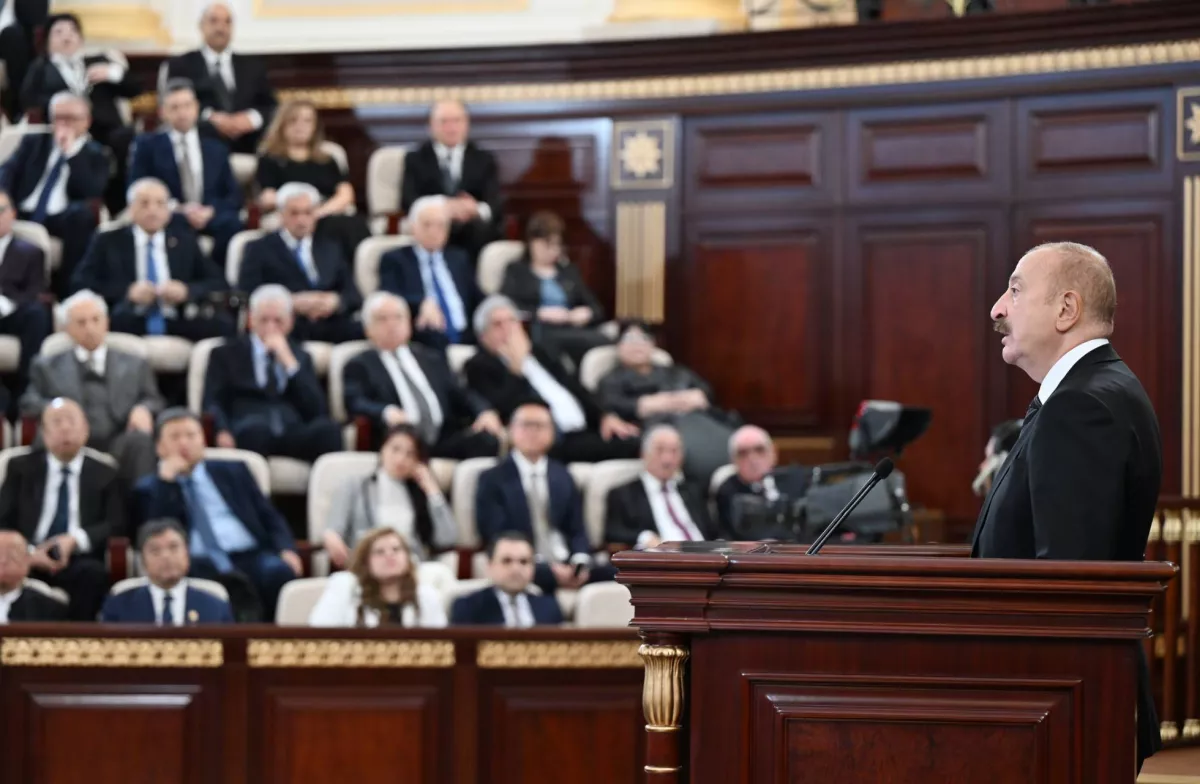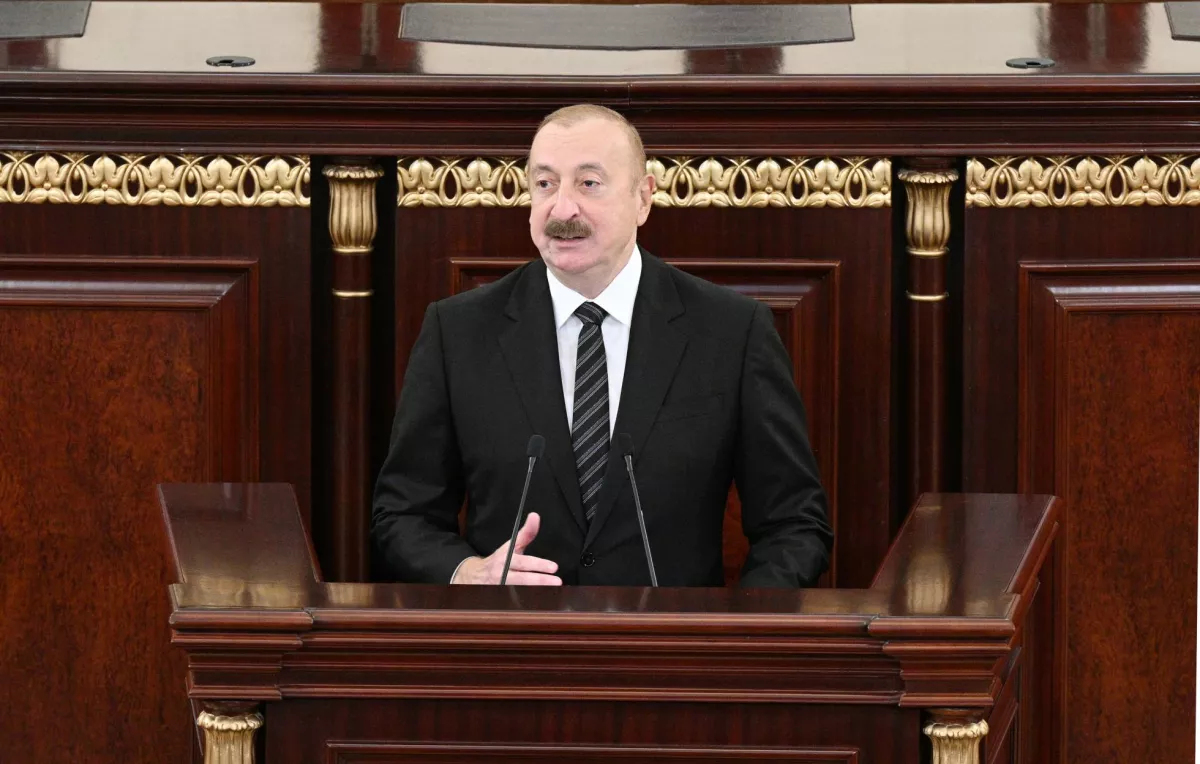Maps that break myths Analyzing President Aliyev’s speech
In Azerbaijan, history is not invented — it is proven with documents, maps, and facts. This very principle became the cornerstone of President Ilham Aliyev’s address at the 80th anniversary of the National Academy of Sciences. Ilham Aliyev did not merely speak about the historical realities of the South Caucasus — he outlined the nation’s intellectual and civilisational mission: to defend the truth not with emotions, but with science, documents, and facts. His message was clear and direct — it was about restoring historical justice, not asserting any territorial claims.
The President emphasised that an objective discussion about Karabakh and Eastern Zangazur is impossible without addressing the past: “Of course, when we talk about Garabagh and East Zangazur, we should also speak about the history of Azerbaijan. Unfortunately, our rich history has long been distorted by Armenia and the Armenian diaspora. The campaign of propaganda against us does not stop even today. Therefore, we must counter this with our own truth.”
This is not an accusation or a political slogan — it is a call to the scientific community. Aliyev reminded that he had spoken to the Academy about this responsibility ten years ago and reiterated: history must not only be known but also promoted, so that the world forms a firm understanding based on real facts.

An important idea resonated in his words: this is not about the past as a mere collection of archival dates. Historical memory is the foundation of a nation’s self-awareness, its capacity to create, build, and be confident in the future. That is why Aliyev emphasised: “Azerbaijani citizens, Azerbaijani youth should know our rich history. They should know that the history of the Azerbaijani people, the history of our statehood and the ability of our people to build and create have a centuries-old history.”
This is not rhetoric aimed at a domestic audience — it is about building resilience against falsifications that for decades were used to portray Azerbaijan on the world stage as a party without historical rights.
A fundamentally important point in Ilham Aliyev’s remarks concerned the geography of Azerbaijani settlement. He did not speak of revenge or call for a forceful return. The President stated a fact well known in the region but often left unspoken: “The Azerbaijani people have lived and continue to live across a vast geography… They also lived in Armenia, but were driven out of there. But I am sure that they will live there again… Azerbaijanis have never been afflicted with the disease of separatism.”
These words are crucial. They refer to a peaceful, legal presence of the Azerbaijani population on lands where they have lived for centuries — without ultimatums, threats, or political pressure. Immediately following this, Aliyev offered a key clarification: wherever Azerbaijanis reside, they have always become part of the statehood of the country in which they live. This is a direct refutation of the myth propagated by Armenian narratives.
“Our people have contributed to the statehood of the countries they live in. And today, Azerbaijanis do not create and will never create problems for any state or its people. Therefore, the return of Azerbaijanis to the present-day Armenia should not intimidate the people or state of Armenia,” Aliyev emphasised.

Thus, the context is clear: this is not about revising borders or asserting territorial claims. It is about the natural right of displaced people to return to a normal life — just as peoples do around the world. Aliyev emphasises that this will be a peaceful process: “We must return to our historical lands — not with tanks, but in cars.”
This statement in itself constitutes a political position. There is no pressure, no language of force — only the language of historical and legal logic.
For this reason, the head of state specifically highlighted the academic and documentary aspect of the issue: scholarly works, exhibitions, presentations, historical maps. And here we are not talking about subjective sources, but factual documents created by third parties. Aliyev noted: “It is enough to look at early-20th-century maps published by Tsarist Russia to see that the overwhelming majority of toponyms in what is now Armenia are of Azerbaijani origin. There was no lake Sevan on those maps. There is Lake Goycha on those maps…We did not compile those maps for anyone to say that we are committing fraud.”
He clarified that these are the very same imperial Russian authorities who resettled Armenians in Karabakh — and it is precisely their sources that confirm the historical Azerbaijani character of the region.
When an argument is based on documents, it cannot be disputed. This is the logic behind Aliyev’s statement: “These maps are based on pure historical truth.”
The President stresses the need to publish books and even simple booklets — so that the youth know the truth, so that the world knows the truth, and so that the notion of the peaceful return of Azerbaijanis to present-day Armenia is presented not merely emotionally, but with legal, logical, and moral justification.

The development of independent Azerbaijan is also highlighted as part of this historical continuum. Aliyev notes: “Azerbaijan has never been as strong in the centuries-old history of the Azerbaijani statehood as it is today.”
This is not a declaration of power for power’s sake — it is an explanation of why the time has come to gather the scientific legacy and cultivate a school of historical thinking. When a country feels confident on the international stage, it has a duty to strengthen its academic foundations. Therefore, the President directly calls for new fundamental research to tell the world the truth about 30 years of independence and the millennia-long history of Azerbaijani statehood.
The meaning of the speech is clear: Azerbaijan is not revising the region’s map, nor is it threatening its neighbours. Yet it does not intend to forget the truth about itself. Returning to historical memory is a return not through arms, but through knowledge, documents, culture, international diplomacy, and human presence. This is what distinguishes genuine state policy from propagandistic clichés.
That is why the theses presented at the Academy’s anniversary resonate with confidence: the country has arguments, it has documents, it has historical truth — and it has no desire to turn the struggle for that truth into war.








